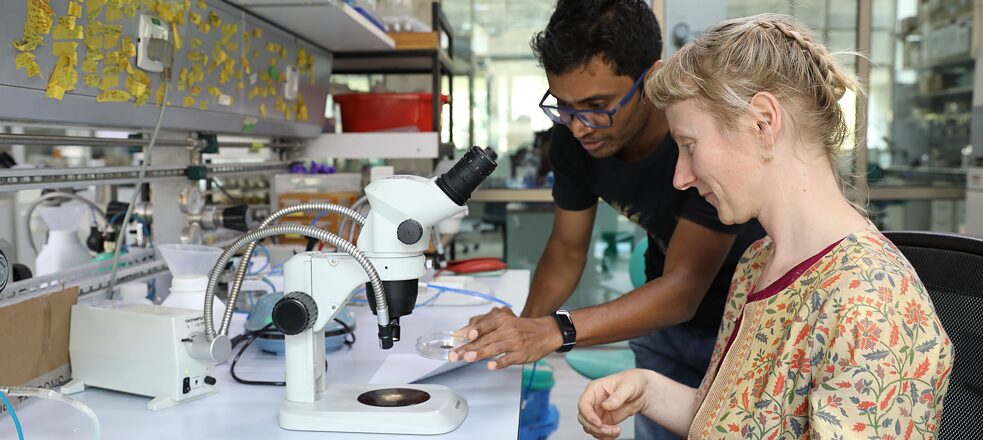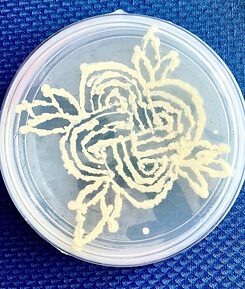bangaloREsidency: Line Krom
Raise dust

The bangaloREsidency enables artists from Germany to get to know art and cultural spaces in Bangalore and to realise their own projects there. Visual artist Line Krom was bangaloREsident at the National Centre for Biological Sciences (NCBS) from October to December 2022. In the interview, she talks about her work with dust and debris at the NCBS campus and her encounters with local artists.
You were bangaloREsident at the archives of the NCBS, the National Centre for Biological Sciences, in Bangalore last autumn. As a visual artist, why did you choose a scientific archive as your residence destination?
Using plants as non-human collaborators, I mine valuable metals from dust and debris. Through the dust and debris, I explore the exclusion mechanisms of cultural institutions. The NCBS offered me multiple opportunities to advance my research.
Why did you want to go to India for your work?
During the pandemic, I met some artists from India in online trainings and web seminars. Individual contacts and convivial Zoom evenings quickly developed that have lasted far beyond the further education. That's how I became curious about the Indian art scene.
What was your personal highlight in Bangalore?
I was thrilled by the close integration of art, sustainability and ecology in the art scene in Bangalore. In the different places I explored, I met art makers who put these issues at the centre of their work. For example, Suresh Samuha who runs an organic farm, Meena Vari who co-organised the project "The Soil Assembly" for the Kochi-Muziris Biennale for Srishti Manipal Institute of Art, Design and Technology. As well as many other teachers and students I just met there, who gave me an insight into their work.
How did the bangaloREsidency support you in your work?
 Drawing with bacterial cultures from the archive
| Photo: Line Krom
Above all, I was impressed by the impartiality and openness of the scientists at the NCBS. I got to know different scientific methods that opened up new discoveries for me. I found gold in the dust of the archive with an electron microscope, I used the archive as a place of life by growing bacterial cultures from the dust, and I extracted electricity from sorted archive material...
Drawing with bacterial cultures from the archive
| Photo: Line Krom
Above all, I was impressed by the impartiality and openness of the scientists at the NCBS. I got to know different scientific methods that opened up new discoveries for me. I found gold in the dust of the archive with an electron microscope, I used the archive as a place of life by growing bacterial cultures from the dust, and I extracted electricity from sorted archive material...
I have met very many warm and exciting people who have challenged and supported me with their expertise and curiosity. I hope to build on this again in the future.
Line Krom is a visual artist living in Frankfurt am Main. Her background as a cultural anthropologist allows her to look at the circumstances under which art is created. She uses artistic methods to explore precarious working conditions in the art business. The results of her projects manifest themselves in drawings, objects, installations, texts and performances. She has been working with dust as an artistic material for ten years, but her time at the NCBS in Bangalore has given her new perspectives on the material. At the NCBS, experts from the archival and natural sciences and various artistic fields crossed her path. Her research journey thus became a border crossing between disciplines.
The bangaloREsidency was initiated as a long-term collaboration between the Goethe-Institut / Max Mueller Bhavan Bangalore and various innovative art and cultural spaces in Bangalore. The aim of the programme is to offer artists living and working in Germany a platform that enables them to develop creatively, to face the challenges of a modern Indian metropolis like Bangalore and to collaborate with Indian artists.